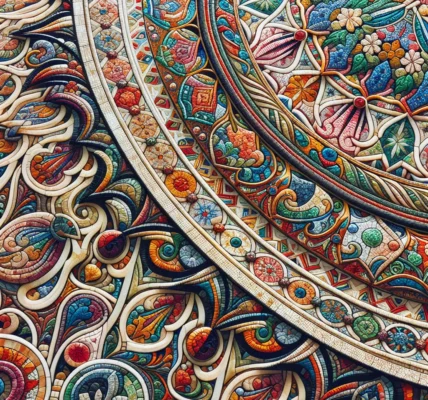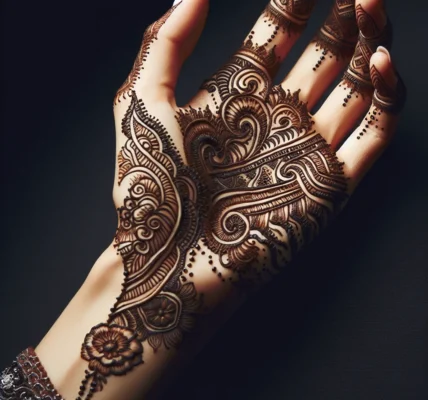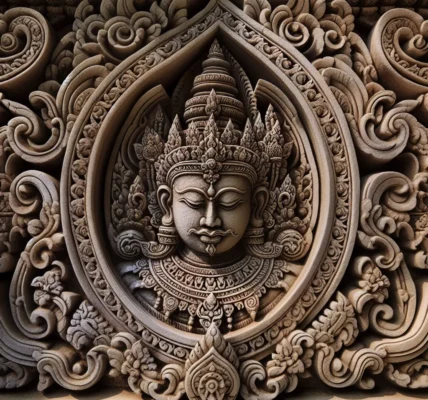The Influence of Culture on Ornamental Preferences
When it comes to ornamental preferences, culture plays a significant role in shaping individuals’ tastes and choices. The influence of culture on ornamental preferences is a complex and multifaceted aspect of psychological research. Cultural norms, values, and traditions greatly impact the way people perceive and appreciate different types of ornamentation.
One of the key factors in understanding the influence of culture on ornamental preferences is the concept of aesthetic symbolism. Different cultures attribute varied meanings and symbolism to specific ornamental motifs, colors, and designs. For example, in some cultures, the color red may symbolize good luck and prosperity, while in others it may represent danger or warning.
Furthermore, the societal emphasis on certain aesthetic principles shapes individuals’ ornamental preferences. For instance, cultures that prioritize minimalism and simplicity may favor clean, uncluttered ornamentation, while those that value opulence and grandeur may prefer ornate and lavish designs.
Another intriguing aspect of cultural influence on ornamental preferences is the role of cultural symbolism and heritage. Ornamentation often reflects a society’s history, mythology, and collective memory. Individuals may be drawn to specific ornamental styles due to their cultural heritage and the sense of connection and identity they provide.
Understanding the influence of culture on ornamental preferences is essential for various fields, including interior design, marketing, and cross-cultural psychology. By recognizing the cultural factors that shape individuals’ ornamental choices, practitioners and researchers can create more culturally sensitive and appealing designs and products that resonate with diverse audiences.
Evolutionary Psychology and Aesthetic Preferences
Evolutionary psychology plays a crucial role in shaping our aesthetic preferences, including ornamental choices. As humans, our inclination towards certain ornamental preferences can be traced back to our evolutionary history. The concept of evolutionary psychology suggests that our aesthetic inclinations are not merely arbitrary, but rather rooted in the adaptive behaviors of our ancestors.
When it comes to ornamental preferences, evolutionary psychology proposes that certain traits and characteristics are favored due to their association with evolutionary advantages. For example, the preference for vibrant and symmetrical patterns in ornamental design may stem from an innate attraction to signs of health, fertility, and genetic fitness. These preferences could have provided our ancestors with evolutionary advantages in selecting suitable mates and identifying healthy environments for survival.
Furthermore, the evolutionary psychology of ornamental preferences extends to the concept of environmental adaptation. Our attraction to natural elements such as landscapes, water features, and botanical motifs may be a result of our evolutionary adaptation to seek out environments rich in natural resources and sustenance.
In summary, the evolutionary psychology of ornamental preferences provides valuable insights into the underlying reasons for our aesthetic inclinations. By delving into the evolutionary roots of our preferences, we can gain a deeper understanding of why certain ornamental styles and designs resonate with us on a fundamental level.
Gender Differences in Ornamental Preference
Research on the psychology of ornamental preferences has revealed interesting insights into the differences in aesthetic choices between genders. Studies have consistently shown that there are notable gender differences in ornamental preferences, with men and women often exhibiting distinct inclinations towards certain types of adornments. These differences stem from a combination of biological, sociocultural, and psychological factors.
One prominent aspect of gender differences in ornamental preference is the tendency for women to show a greater preference for ornamental items such as jewelry, decorative accessories, and floral motifs. This inclination is often linked to evolutionary psychology, where women’s attraction to visually appealing objects can be seen as an adaptive trait for attracting mates or signaling social status within a community.
On the other hand, men often display a preference for ornamental items that are perceived as more utilitarian or symbolically significant, such as watches, cufflinks, or statement pieces with strong, angular designs. This preference aligns with traditional gender roles and societal expectations, where men’s adornments are often associated with conveying power, success, and status.
Psychologically, these gender differences in ornamental preferences can also be attributed to societal influences, upbringing, and individual personality traits. For example, cultural norms and media representations play a significant role in shaping individuals’ perceptions of what is considered appropriate or desirable in terms of ornamentation.
Understanding these gender differences in ornamental preferences is crucial for various industries, including fashion, design, and marketing. By recognizing and catering to these distinct preferences, businesses can effectively tailor their products and advertising strategies to resonate with their target audience. Moreover, acknowledging and embracing the diverse range of ornamental preferences can contribute to the promotion of inclusivity and diversity within the design and fashion spheres.
In conclusion, the psychology of ornamental preferences reflects a complex interplay of biological, sociocultural, and psychological factors. Gender differences in ornamentation reflect not only individual tastes but also broader societal influences, and understanding these nuances is essential for creating meaningful and relevant designs and products.
The Psychological Impact of Ornamental Environments
The psychological impact of ornamental environments on individuals is a topic of growing interest in the field of psychology. Research has shown that ornamental preferences can have a significant effect on people’s emotions, behaviors, and overall well-being. Ornamental environments, such as art-filled spaces, aesthetically pleasing gardens, or visually appealing interior designs, have the potential to evoke positive emotions and contribute to a sense of psychological comfort and relaxation.
Studies have indicated that exposure to ornamental environments can lead to reduced stress levels, improved mood, and increased feelings of happiness and contentment. Moreover, individuals often report a greater sense of connection to their surroundings and a heightened appreciation for the beauty of their environment when surrounded by aesthetically pleasing ornamental elements. This suggests that ornamental preferences play a crucial role in shaping people’s emotional experiences and cognitive perceptions.
Furthermore, the psychological impact of ornamental environments extends beyond individual well-being and can have implications for social interactions and community dynamics. A shared appreciation for ornamental beauty can foster a sense of community and promote social cohesion, as it provides a common ground for individuals to connect and communicate.
In conclusion, the psychology of ornamental preferences encompasses a wide range of psychological phenomena, including emotional responses, cognitive processes, and social dynamics. Understanding the psychological impact of ornamental environments is essential for creating spaces that promote positive psychological experiences and contribute to overall well-being.




